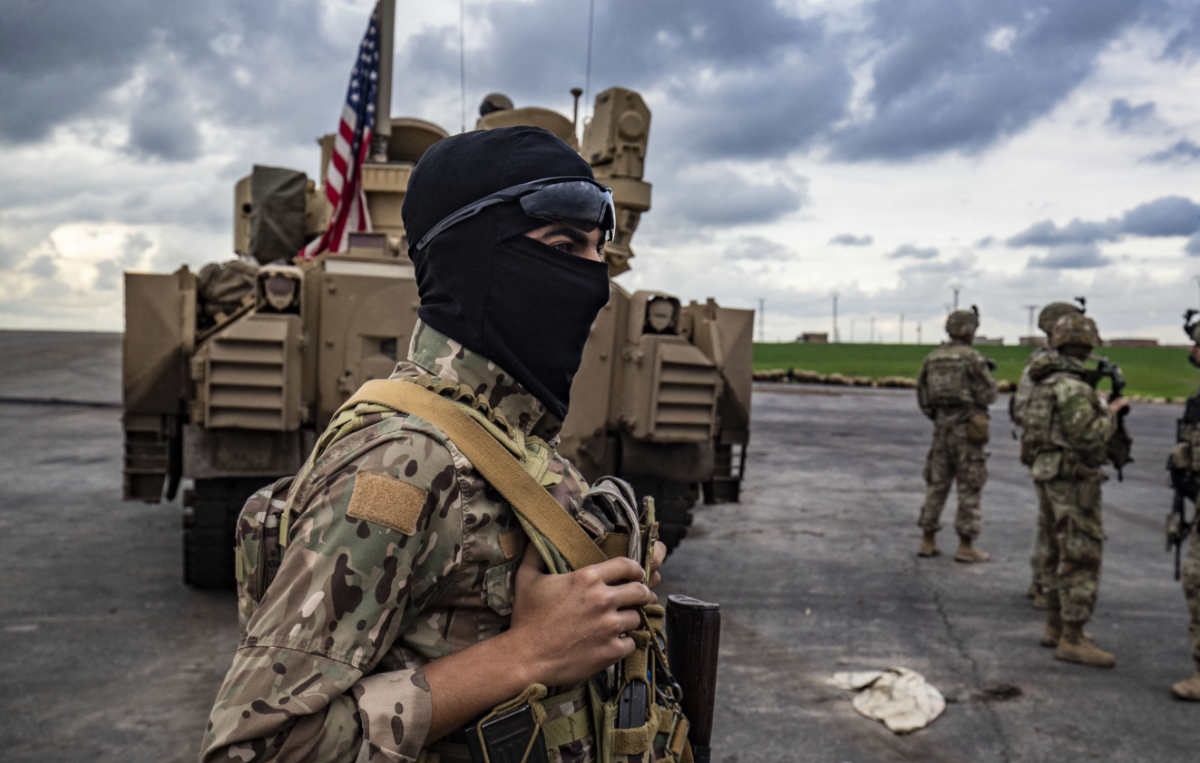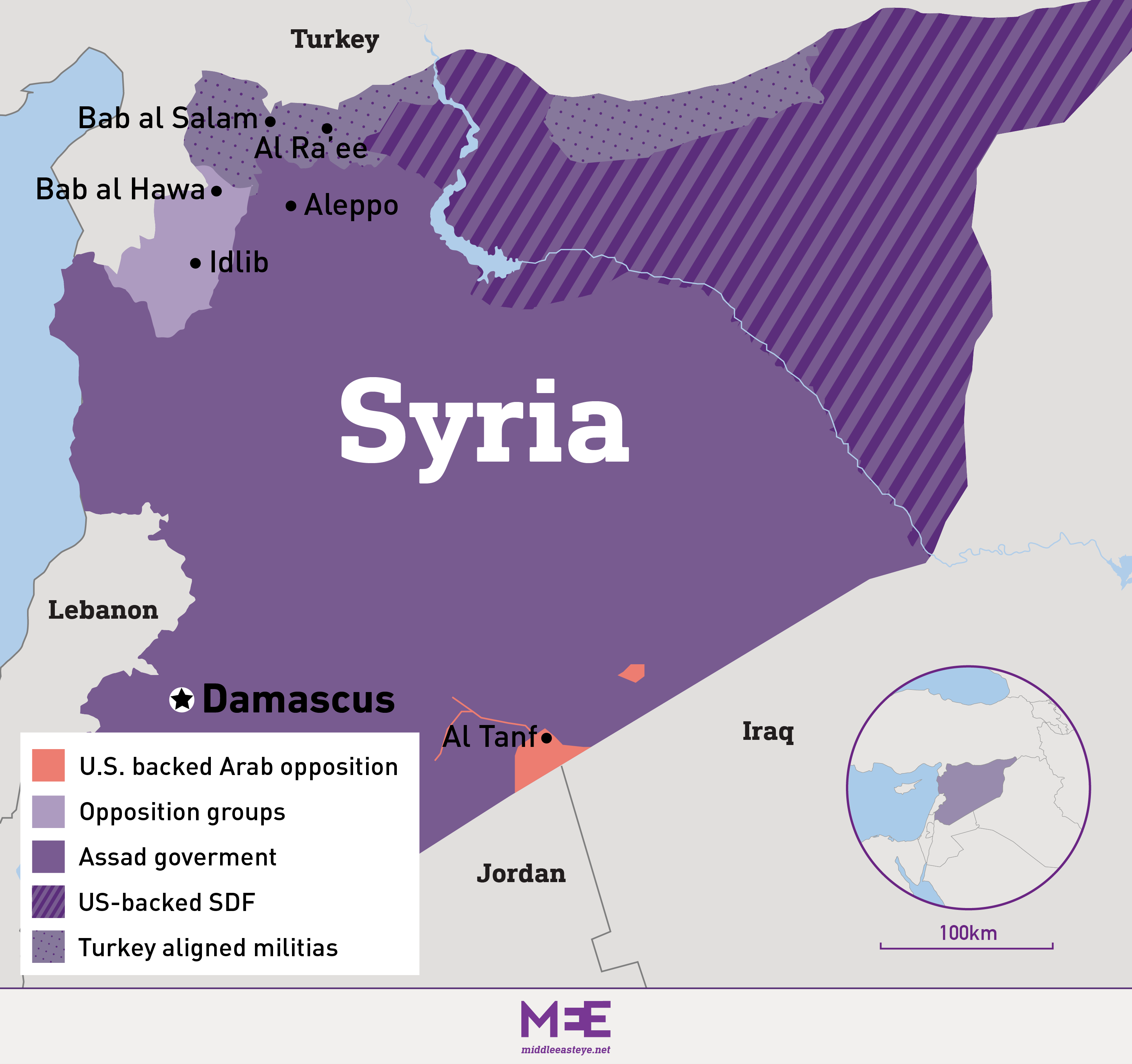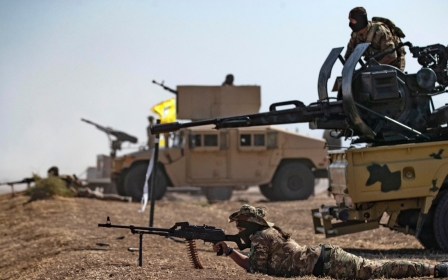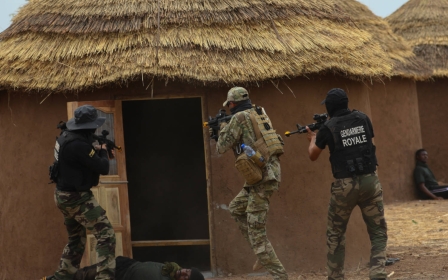Syria: What is the US endgame?

The US said on Wednesday it was sending F-22 fighter jets to Syria to counter threats from Russia, underlining how a military mission that started with the aim of combating the Islamic State militant (IS) group has turned into a wider geopolitical scramble.
As the Syrian conflict has progressed, Washington's rivals, Iran and Russia, have entrenched themselves in Syria - at a time when Bashar al-Assad is regaining friends in the region.
US troops arrived in northeast Syria in 2015 as part of Operation Inherent Resolve. Working alongside the Syrian Democratic Forces (SDF), a Kurdish-majority militia, they pushed back IS after it swept through vast swathes of Syria and neighbouring Iraq. The so-called "caliphate" was territorially defeated in 2019.
Militarily, the US mission continues to be a success.
During Ramadan this year, IS managed just 19 attacks in Syria, a 37 percent decrease from the same period last year and 70 percent less compared to 2020, according to the US-led coalition.
The drop comes even as the militant group demonstrates its durability in government-held parts of Syria. In April, IS defeated a joint Russian-Syrian campaign in central parts of the country.
Today, the US mainly works with its Kurdish allies to target IS operatives in an advise and assist role. They also help guard around 10,000 imprisoned fighters and tens of thousands more of their family members - mainly women and children - who linger in squalid refugee camps.
Last week, at a gathering in Saudi Arabia of members of the coalition to defeat IS, US Secretary of State Anthony Blinken praised the mission’s success, even as he warned about the “evolving threat” IS posed in the Sahel region and West Africa.
But eight years after US troops arrived in northeast Syria, critics say that Washington is no closer to leaving than when IS was at its peak.
“Northeast Syria is the definition of a forever war,” Robert Ford, former US ambassador to Syria, told Middle East Eye.
“Because there are no US casualties and because it’s not a particularly expensive operation, it slides under the doorway. And the US stays on year to year,” he added.
'Depleting Iran and Russia'
The official justification for the US presence is the 2001 and 2002 Authorizations for Use of Military Force which Congress passed after the 11 September attacks. Attempts by some members of Congress to stop the operation in an effort to curtail the president's war powers have failed to gain traction.
“Nine hundred troops in Syria is a pretty low-cost way for us to kill IS bad guys and prevent Russia, Iran and Damascus from consolidating control of the country,” Andrew Tabler, a senior fellow at the Washington Institute for Near East Policy and former Syria director on the White House National Security Council, told MEE.
The US is now pitted against rivals Iran and Russia.
“The only reason the US can keep the military presence in Syria is to say they are fighting terrorism,” Bassam Ishak, a diplomat in Washington DC with the Syrian Democratic Council, the political arm of the SDF, told MEE. “But the main objective now is depleting Iran and Russia.”
President Bashar al-Assad controls about two-thirds of Syrian territory with Moscow and Tehran's backing. As his country’s civil war comes to an end, Assad has turned his attention to reentering the regional fold.
The devastating February earthquake in Syria provided an opening for Assad to win over neighbours like Jordan and Egypt. Those efforts culminated in a landmark visit to Saudi Arabia in May, where Syria was invited back into the Arab League.
Analysts believe one of Assad’s long-term goals is reclaiming northeast Syria, a historically fertile region that is also home to some of Syria’s only oil fields, and that Damascus and its allies have stepped up their action against the US with that goal.
'Russia enters the proxy game'
US officials have reported an increase this spring in the number of Russian overflights of American bases. Washington is also on guard from Iranian proxies. The top US commander for the region recently said Iran had launched 78 attacks on US bases in Syria since January 2021.
“All the pointers are that the Iranian militias are building-up to a more aggressive pattern of attack against the US,” Michael Knights, an expert on militia groups and a founder of the website Militia Spotlight, told MEE. “They see an opportunity to kick the US out of northeast Syria.”
In March, a kamikaze drone slammed into a US base in Hasakah, Syria, killing a US defence contractor and wounding six service members.
'For Damascus, the bigger prize is cutting a deal with the Turks. There are limits to what the SDF can offer'
- Sam Heller, Century Institute
Knights said the drone strike, which coincided with a time when the facility’s radar had been lowered for maintenance, was “particularly advanced” and suggested the attackers had “local intelligence or Russian overhead support".
A report in June, which said that Iran, Syria and Russia were enhancing coordination to drive the US out of northeast Syria by targeting ground lines of communication with advanced bombs, has added to concerns that American troops are at higher risk.
“They are thinking really hard about the tactical nuts and bolts about how to attack US humvee and Cougar vehicles,” Knights said, “and Russia is getting into the proxy game.”
'What Assad wants'
But Ford, the former US ambassador, said the US often overplays the importance of northeast Syria to Damascus and its backers. A factor he believes has contributed to the US drifting along in the region without a clear endgame.
“People in Washington keep thinking the US presence in northeast Syria is a big bargaining chip,” Ford said. “Assad and the Iranians might want it back, but they don’t need it.
“Assad can scrape by holding the population centres in western Syria and there is nothing about that US presence that stops the Iranians and Russians from doing what they want to do,” he said.
“It’s Israeli air strikes that hurt Iran, not 900 US troops.”
'The Arab Sunnis distrust the Kurds, the Kurds distrust the Turks and everyone distrusts the US'
- Mahmoud Meslat, Syria expert
Tabler, however, says that the US presence has only gained in importance for Washington with the war in Ukraine, amid signs of increasing cooperation between Tehran and Moscow.
“Sometimes resource denial is the best you can do,” he told MEE. “If you are interested in frustrating the new Russia-Iran alliance, the American presence is important”
Most do not expect the US to depart anytime soon.
A partial withdrawal of US troops from northeast Syria by former President Donald Trump in 2019 paved the way for a Turkish incursion that prompted criticism the US was abandoning its Kurdish allies.
Turkey considers the US-backed SDF to be an extension of the Kurdistan Workers’ Party, which the US, EU and Ankara label a terrorist organisation. The Biden administration is also sensitive to the optics of another American military withdrawal from the region after the chaotic pullout of US troops from Afghanistan.
'No endgame'
“There is no US endgame in Syria, but there is generally a view that a withdrawal would be a total mess,” Sam Heller, a Syria expert at the Century Institute based in Beirut, told MEE.
But the US presence could be squeezed in other ways.
Washington’s Kurdish allies have been in talks with Damascus about a potential political deal, but there is scant sign of progress. Analysts doubt whether Assad, who is a member of Syria’s Alawite minority, would see much benefit in - or be able to control - a region of mainly Kurds and Arab-Sunni Muslims.
"For Damascus, the bigger prize is cutting a deal with the Turks. There are limits to what the SDF can offer Syria,” Heller said.
With President Recep Tayyip Erdogan’s rule secured for another five years after the elections in Turkey, there are signs he is looking to join the regional bandwagon and mend fences with Assad.
Last month, foreign ministers from Turkey, Syria, Russia, and Iran met in Moscow, in their highest-level talks to date since the start of the Syrian war. Turkey itself has carved out a big chunk of northern Syria, where its own military and administrative footprint dwarfs that of its Nato ally, the US.
But as the US mission in northeast Syria hits its eighth year, some are concerned that Washington is growing complacent.
Mahmoud Meslat, a Syria expert at Oberlin College who hails from a prominent family in the region, says tensions between the Kurdish and Arab communities mean there will always be a simmering level of resentment for IS to exploit.
“The US doesn’t want to hear that,” Meslat told MEE. “They just throw money at the sheikhs. Right now people are hungry, so they keep quiet.”
The White House and Department of Defence didn't respond to Middle East Eye's requests for an interview.
“The Arab Sunnis distrust the Kurds, the Kurds distrust the Turks and everyone distrusts the US,” he added. “But Russia and Iran are talking to everyone and the US is just sitting there.”
This article is available in French on Middle East Eye French edition.
Middle East Eye propose une couverture et une analyse indépendantes et incomparables du Moyen-Orient, de l’Afrique du Nord et d’autres régions du monde. Pour en savoir plus sur la reprise de ce contenu et les frais qui s’appliquent, veuillez remplir ce formulaire [en anglais]. Pour en savoir plus sur MEE, cliquez ici [en anglais].






